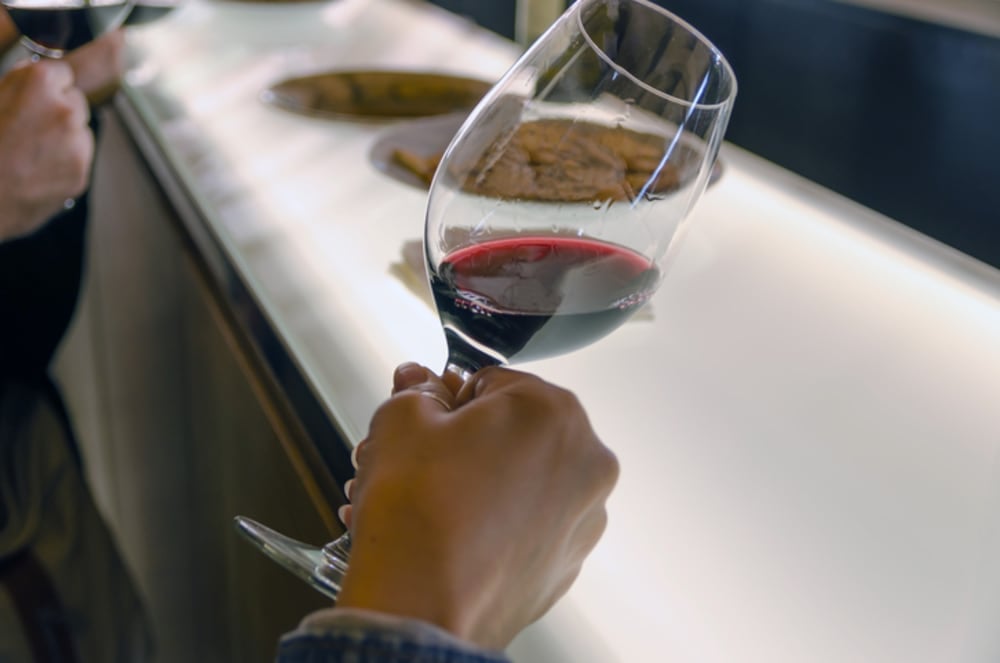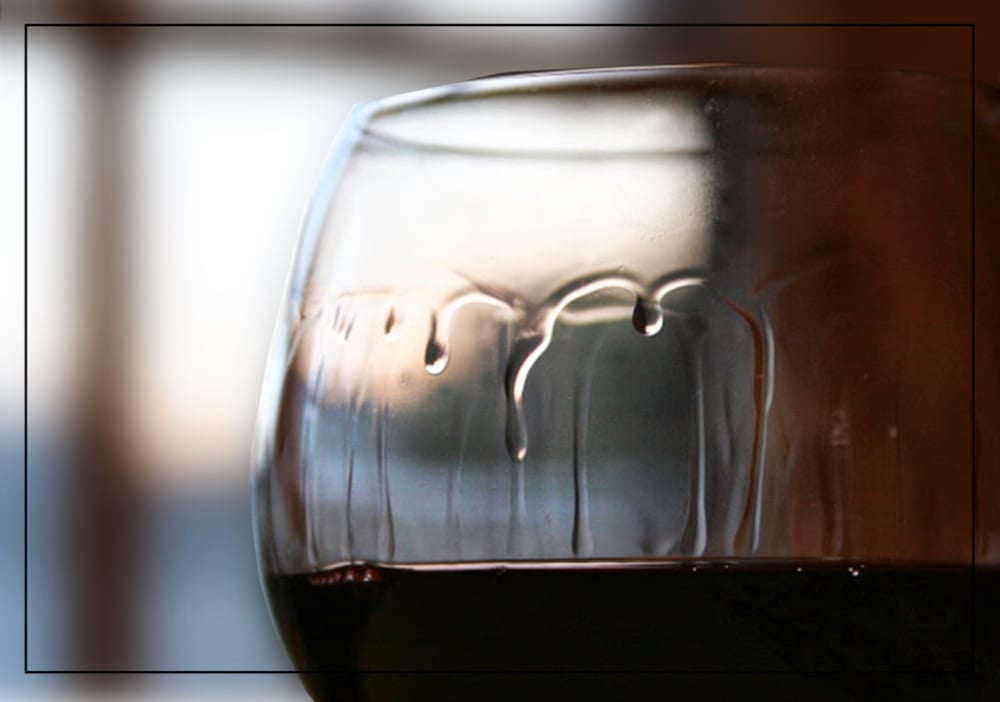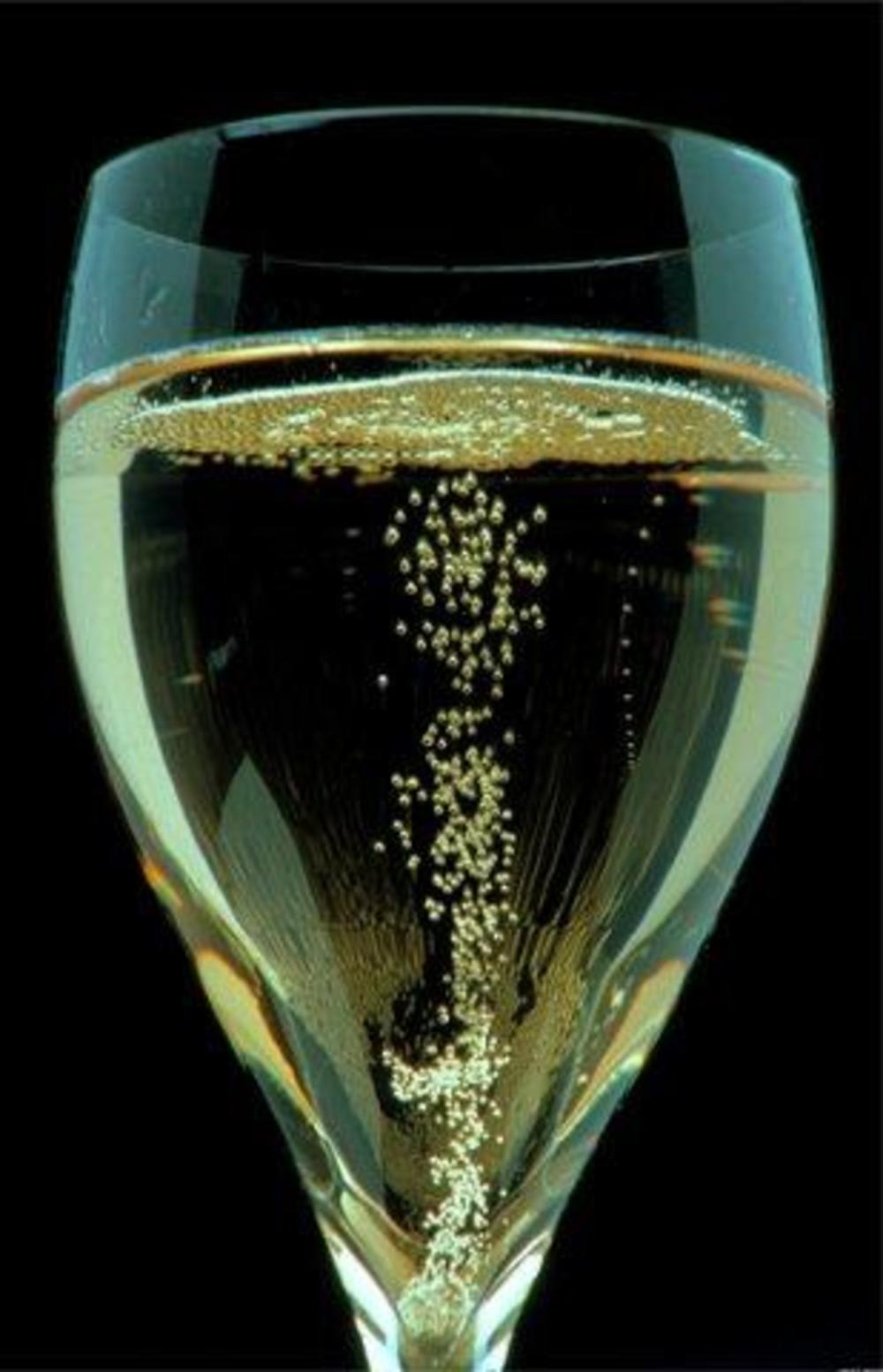Wine professionals assess wine by sight, smell and taste. They first check the colour, sniff, swirl, sniff again and finally slurp the wine (with or without making noise). What do these steps tell them? Let’s talk about these indicators in a series of three articles, starting with sight.
The appearance of a wine gives an indication to the grape varieties, age and alcohol content, as well as how the wine was made and its storage condition. There are four elements we can judge solely by sight: colour, clarity, viscosity and effervescence.

Colour has three attributes: hue, saturation and brightness. Hue is the actual colour, while saturation refers to the intensity. To best observe the colour, look through the glass against a white background.
A dark red wine is made with thick-skin grape varieties such as Shiraz/Syrah or Cabernet Sauvignon, while a pale red wine is likely to be made with Pinot Noir, Nebbiolo or Gamay grapes. A bright ruby wine is young, possibly no more than three or four years old. Red wine sheds its bright colour to become brick or reddish brown with a lighter orange rim as it ages.
A young white wine can be almost colourless or very light yellow with a green tinge, with the colour turning darker to straw yellow or even copper gold when aged. A young white wine with a high saturation of golden yellow indicates that it has been aged in a new barrel.
Rosé progresses from pale, to salmon pink, to onion-skin pink as it matures.

Brightness, a visual sign of a wine’s health, is enhanced by high acidity. A dull-looking wine may have undergone oxidation or passed its peak, and it will taste flat and lack aroma. Good wines, including aged red wines, remain bright and radiant.
Viscosity can be seen when you swirl a wine and colourless tears, or legs, form and flow down along the sides of the glass. This is caused by alcohol or sugar, with both having high viscosity. A wine with fewer tears indicates that it has a lower alcohol content and is likely to come from a cooler growing region. In contrast, high-alcohol wines from warm regions, fortified wines and sweet wines show more tears. The amount of tears has no relationship to quality, but exceptionally high viscosity may suggest that a wine has been spoilt by bacteria.

Clarity. Most wines are clear and lack impurities. Lack of clarity is a telltale sign of a mature red or unfiltered wine because of the presence of sediments. These sediments are not harmful and do not change the wine’s quality. Usually, winemakers mention on the back label that a wine is unfiltered or unfined, so one may expect a bit of cloudiness or sediments. However, if the wine has been clarified but still looks hazy or cloudy, it may be a sign of wine fault, namely yeast or bacteria growth. A well-made unfiltered wine tastes like wine, but a faulty, cloudy wine tastes imbalanced and rough, with a lack of fruit aromas.

Sometimes, crystal-like sediments that look like small pieces of broken glass may be found in old white wine. These are tartrate crystals formed by the reaction of tartaric acid and potassium in cold temperatures, and they do not affect a wine’s quality. They are lovingly called “wine diamonds” by wine lovers.
Effervescence. Effervescence is caused by the release of carbon dioxide from wine, and it is obvious in sparkling wine. High-quality sparkling wine made with secondary fermentation in the bottle (aka the champagne method) has fine and persistent bubbles because the carbon dioxide is released slowly and steadily. Italian Prosecco has its secondary fermentation in stainless-steel tanks and is then bottled in a pressurised environment, resulting in less bubbles that disappear more quickly. Large bubbles indicate lower-quality wine or reveal that carbon dioxide has been introduced by carbonation rather than fermentation.

White, rosé or young red wines may have noticeable tiny bubbles because they are deliberately left with a small amount of carbon dioxide in order to maintain their freshness. However, excessive bubbles in still wine may suggest secondary fermentation in the bottle because of the presence of residual sugar and yeast, which is not desirable. Similarly, there should not be any bubbles in aged red wine.
The appearance of wine can certainly tell us something. However, please remember that the colour and tears of a wine have nothing to do with its quality. These only indicate the grape variety, winemaking technique, age, alcohol and sugar content. A dark red wine or wine with many tears is not indicative of a better-quality wine.
For more wine article like this, like Foodie on Facebook

